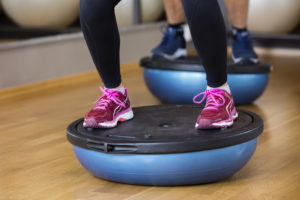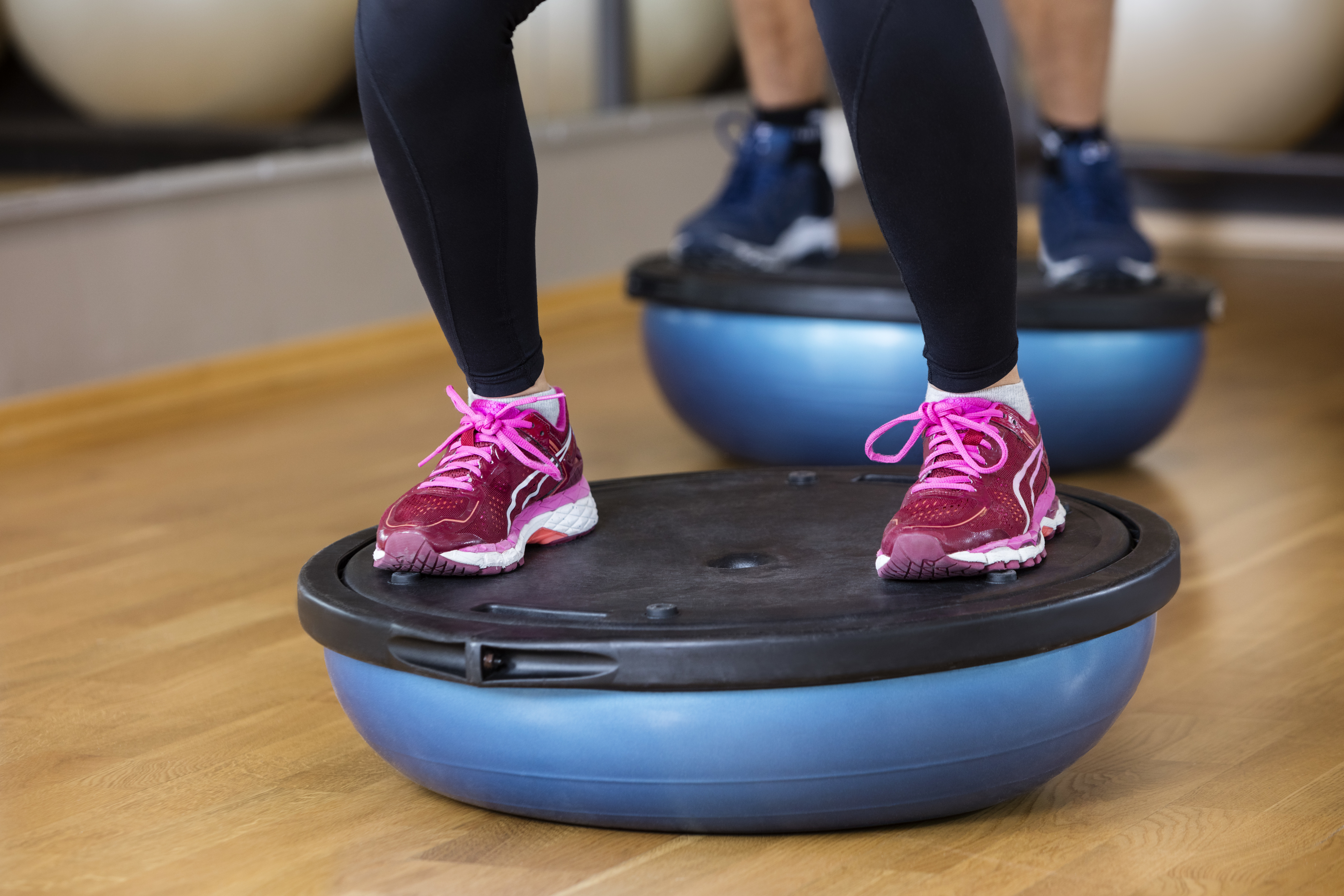 Most people focus the bulk of their workouts on developing greater cardiovascular fitness and building muscle strength and size. But, there’s another aspect of a well-balanced training program that you should ignore. It’s balance and stability training.
Most people focus the bulk of their workouts on developing greater cardiovascular fitness and building muscle strength and size. But, there’s another aspect of a well-balanced training program that you should ignore. It’s balance and stability training.
What is balance? It’s the ability to hold your body in an upright, stable position. There are two types of balance. The first is called static balance. It refers to the ability to hold your body steady when you’re standing or sitting still. Dynamic balance is being able to stay steady when your body is moving. Balance and coordination share some similarities. When you describe someone as coordinated, it means they have good balance skill but also have speed and agility.
When you think of balance, you might envision a gymnast effortless moving her body across a narrow balance beam with enviable precision, but you need balance skills if you play any type of sports. In fact, poor balance greatly increases the risk of injury. We tend to lose our sense of balance as we age. That’s why balance training throughout life is so important. Balance training reinforces the pathways that help us maintain static and dynamic balance.
How can you improve your balance skills as part of your fitness training?
Static Balance
The simplest way to develop better static balance is to practice standing on one leg and holding that position as long as possible. You can even do this while you’re brushing your teeth. Simply lift one leg off the ground and hold it up until you become unsteady. Time yourself and try to improve on your time. Switch legs and do the same. Over time, your times will increase. You should reach the point where you can balance on one leg for at least 30 seconds. Don’t be surprised if you have an easier time balancing on one leg than the other! That’s fairly common. Work on static balance first. It’s important to master the ability to stay stable in a static position before progressing to dynamic balance exercises.
Dynamic Balance
Once you can balance on each leg for 30 seconds, it’s time to introduce exercises that will help boost your sense of dynamic balance. Here’s a good beginning movement:
•Stand on one leg and hold the other leg up as you did for the static balance exercise. The knee that’s elevated should be bent to 90 degrees.
•Switch so you’re bearing weight on the other leg and holding the other leg up with knee bent to 90 degrees.
•Keep switching legs back and forth as you hold up one and then the other.
•Don’t do the movement too. Stop to balance on each leg and avoid using too much momentum.
Once you’ve mastered this movement, let’s add forward and lateral movement. Start by jumping forward on to one foot. Then, quickly jump back onto the back foot. Keep jumping forward and backward from the front foot to the back foot. The foot that’s not bearing weight should be slightly bent and not touching the ground.
Now, try the same movement laterally. Jump onto your right foot as you hold your left foot up. Then bounce back to your right foot as you hold your left foot off the ground. Keep alternating feet. You can do this type of dynamic balance exercise in any plane of motion.
Plyometric drills, like lateral jumps and skaters, will also help improve your dynamic balance skills.
Other Ways to Improve Your Balance Skills
You can even work on your balance skills while strength training Two of the best strength-training exercises that help develop your balance skills are single-leg squats and single-leg deadlifts. To do a single leg squat, hold one leg up as you descend into the squat. It’s challenging, but you’ll get better at it over time. Here’s how to do a single-leg deadlift:
•Stand on one leg.
•Bend your body toward the floor at the hip as you extend your other leg behind you for balance.
•Stop when your body is parallel to the floor.
•Slowly come back up to the starting position.
•Keep repeating.
•Switch to the other leg.
Forward and backward lunges are also excellent exercises for boosting dynamic balance. Forward lunges are more difficult than backward lunges for most people. You can make the exercise even more dynamic by doing walking lunges.
Use a BOSU Ball
A BOSU ball is a device used for balance training. One side is a flat surface that rests on the floor and the other is rounded like a dome, creating an unstable surface. Once you’re comfortable balancing on one leg on a flat surface, try balancing on each leg while standing on a BOSU ball. The unstable surface makes it more challenging to stay in balance. Doing movements on a BOSU ball also recruits more stabilizing muscles. An additional perk!
Now, try lunges on the BOSU. Here’s how:
•Stand two feet behind the BOSU ball. (the rounded portion facing up)
•Step forward so your right food lands on the center of the BOSU ball.
•Once your foot is secure, descend into a lunge to a depth that your left knee almost touches the ground.
•Raise your body back to the standing position.
•Switch legs and keep alternating.
You can do a variety of exercises that work balance on a BOSU ball. Investing in one is a good way to add variety to your workouts too.
Conclusion
Good balance skills will make you a better athlete and protect against injury. Now, you have simple ways to improve your own ability to stay upright and stable.
References:
American Council on Exercise. “Advanced BOSU Balance Exercises | 5 Exercises for Dynamic Balance”
J Athl Train. 2010 Jul-Aug; 45(4): 392-403.
J Hum Kinet. 2017 Sep; 58: 45-64.
